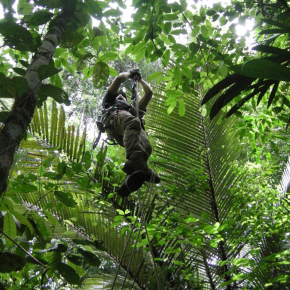
Recovering tropical forests: centuries needed to acquire the composition of old-growth forests
Tropical forests are home to the vast majority of the world’s known 53,000 tree species, but over half of these forests are not old-growth; instead, they naturally regenerate after a forest is cleared, often for agriculture or livestock farming, and the land is later abandoned. In Latin America, recovering secondary forests cover up to 28 % of tropical land surface. Do these forests help maintain tropical tree diversity? Not in the medium term, according to a study published in the 06 March 2019 edition of Science Advances: on average, five decades is enough to find on secondary forest plots the same tree species richness found in well-conserved old-growth forests, but it takes centuries before the composition of a secondary forest is similar to that of an old-growth one (after 20 years of regrowth, only 34% of species identified in neighbouring old-growth forests are found in recovering forests).
Led by an international team of American and European scientists, coordinated by a group at Wageningen University in the Netherlands, and with the participation of two researchers from the CNRS and the Muséum national d’histoire naturelle (MNHN)1 , this research highlights the need to preserve old-growth and recovering forests in order to protect biodiversity in landscapes which have been modified by humans.
- 1Jérôme Chave, a CNRS ecologist at the “Evolution et diversité biologique” laboratory (CNRS/ UT3 Paul Sabatier/IRD) and Denis Larpin, a botanist at the MNHN
Biodiversity recovery of Neotropical secondary forests, Rozendaal et al., Science Advances, 6 mars 2019
doi: 10.1126/sciadv.aau3114
http://advances.sciencemag.org/cgi/content/full/5/3/eaau3114


